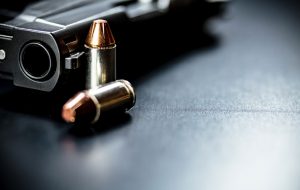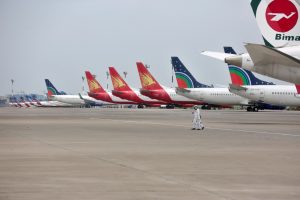BSS, Dhaka
President Zillur Rahman, who appeared as an icon of political decency having firm commitment, breathed his last yesterday at the age of 85 living an eventful life which eventually installed him as the 19th president of Bangladesh.Son of a lawyer and himself a legal practitioner by profession, Zillur Rahman was born in a respectable Muslim family at Bhairab Thana of Kishoreganj district on March 09, 1929. He made his debut in politics in late 1940s and made visible his quality to be a leader during the historic 1952 Language Movement.
In subsequent decades, he made himself part of the nation’s political process when the country saw his emergence as a national leader from a popular student leader having his active role in the Bengali nationalist movements, national upheavals in 1960s and the pro-democracy campaigns in independent Bangladesh.
He took part in movement against military rule in 1962, Six-point Movement in 1966 and the mass-upsurge in 1969 as a close associate of Bangabandhu. In 1970, he was elected Member of the National Assembly (MNA) of Pakistan.
Zillur Rahman was one of the key-figures in reuniting Awami League, which led the 1971 Liberation War, as it was exposed to political wilderness for long 21 years until 1996 elections after the August 15, 1975 putsch.
He also played a crucial role as the party was exposed to extreme difficulties during the military backed interim government in 2007-2008 exhausting his all out efforts to keep the unity and for fresh transition to democracy as the acting party chief while party president Sheikh Hasina was in prison.
But the home atmosphere visibly created grounds for him to develop his political career as his father late Meher Ali Mian was a renowned lawyer, Chairman of the then Mymensingh Local Board and Member of the District Board.
Zillur Rahman came in close touch with Bangabandhu Sheikh Mujibur Rahman in 1947, when as a student of Dhaka Intermediate College he was campaigning on referendum in Sylhet during the British regime.
President Rahman started his academic life in greater
Mymensingh while he passed Matriculation from Bhairab K B High School in 1945 and later obtained Intermediate of Arts (IA) certificate from Dhaka Intermediate College. In 1954, he got his MA with honors in History and LLB degree from the University of Dhaka.
He was first elected to the then Pakistan national Assembly in 1970 and in independent Bangladesh he was elected Member of Parliament (MP) in 1973, 1986, 1996 and 2001 general elections from his Bhairab constituency and served as minister in different portfolios at different times.
The year 1952 appeared as a benchmark for his political life as he presided over a student gathering at the historic Amtala of Dhaka University on 19 February of the year to voice the demand for Bangla as the State Language.
He was one of the prominent student-leaders among the 11 who met at the pond-side between Fazlul Huq Muslim Hall and the then Dhaka Hall next day to take the decision to break the prohibitory order under section 144.
In 1953, he was elected uncontested Vice-President (VP) of Student Union of Fazlul Huq Muslim Hall. He was expelled from the University and his Masters Degree withdrawn for his active participation in the Language Movement.
The university authority, however, was compelled to restore his degree against the backdrop of intense student agitation and completing his academic life he appeared as a lawyer and also served as the elected General-Secretary of Dhaka District Bar Association in 1960s.
The founder president of Kishoreganj Awami League in 1956, Zillur Rahman later performed his duties as the President of erstwhile East Pakistan Awami Sechchhasebak League.
Zillur Rahman was one of the veteran organizers of Bangladesh Liberation War in 1971 as he was associated with Swadhin Bangla Betar Kendro and the publication of newspaper named, Joy Bangla, the mouth-piece of the then Mujibnagar Government.
In 1972, after the Independence, Zillur Rahman was elected as the General-Secretary of Bangladesh Awami League when as member of Bangladesh Constituent Assembly, Zillur Rahman actively took part in the formulation of the Constitution of Bangladesh. After the brutal assassination of Bangabandhu and his family in 1975, Zillur Rahman was put behind bars for four years.
Zillur Rahman played an important role as Presidium Member of Bangladesh Awami League In 1981, when Sheikh Hasina, the elder daughter of Bangabandhu, returned home after seven years of exile.
In 1996, he was elected MP to the 7th Parliament and was entrusted with the task of the crucial local government ministry while he simultaneously performed as the Deputy Leader of Parliament for until 2001. He was again elected MP to the 8th Parliament in 2001.
Bangladesh Awami League won landslide victory in the 9th Parliament Election held on 29 December 2008. He became a Member of Parliament for the Sixth time. He played a pivotal role as the Deputy Leader of Parliament before taking oath as the 19th President of the Republic on February 12, 2009.
Veteran woman leader Ivy Rahman, the beloved wife of Zillur Rahman, was the president of Bangladesh Mohila Awami League. She was seriously injured in the brutal grenade attack by miscreants on 21 August 2004 at a grand-rally of Bangladesh Awami League at Bangabandhu Avenue in Dhaka and embraced tragic death after two days of the heinous incident.
Zillur Rahman was blessed with a son and two daughters.




